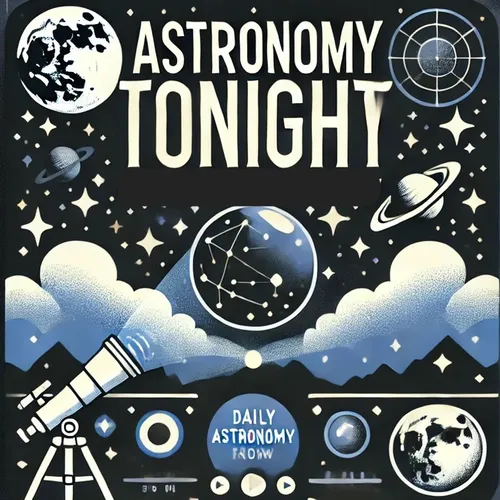Astronomy Tonight for - 12-03-2024
- Author
- Inception Point Ai
- Published
- Tue 03 Dec 2024
- Episode Link
- https://www.spreaker.com/episode/astronomy-tonight-for-12-03-2024--63124944
Certainly! Let's take a cosmic journey back to December 3rd, 1973, a date that holds a special place in the annals of space exploration.
On this day, NASA's Pioneer 10 spacecraft became the first human-made object to fly by the planet Jupiter! This momentous occasion marked a significant milestone in our quest to understand the outer reaches of our solar system.
Pioneer 10, launched on March 2, 1972, had traveled for 21 months across the vast expanse of space to reach the gas giant. As it zoomed past Jupiter at a distance of about 81,000 miles (130,000 kilometers), it captured unprecedented close-up images of the planet and its moons, sending a wealth of data back to Earth.
The spacecraft's instruments revealed Jupiter's intense radiation belts, which were much stronger than scientists had anticipated. In fact, the radiation was so powerful that it pushed Pioneer 10's instruments to their limits, causing some temporary malfunctions. Talk about a cosmic light show!
Pioneer 10 also confirmed the existence of Jupiter's magnetic field, which extends millions of miles into space, and provided valuable data on the planet's atmosphere and interior structure.
Imagine the excitement in mission control as the first images and data started streaming in! Scientists must have been bouncing off the walls like excited atoms in a particle accelerator. This flyby opened up a new chapter in our understanding of gas giants and paved the way for future missions like Voyager, Galileo, and Juno.
As a fun tidbit, Pioneer 10 carries a gold-anodized aluminum plaque designed to tell any extraterrestrial intelligence about humanity and Earth's location. So, as we speak, this cosmic messenger continues its journey through interstellar space, potentially serving as humanity's ambassador to the stars.
The success of Pioneer 10's Jupiter flyby on December 3, 1973, truly lived up to the spacecraft's name, pioneering our exploration of the outer solar system and igniting our imaginations about what lies beyond.
This content was created in partnership and with the help of Artificial Intelligence AI
